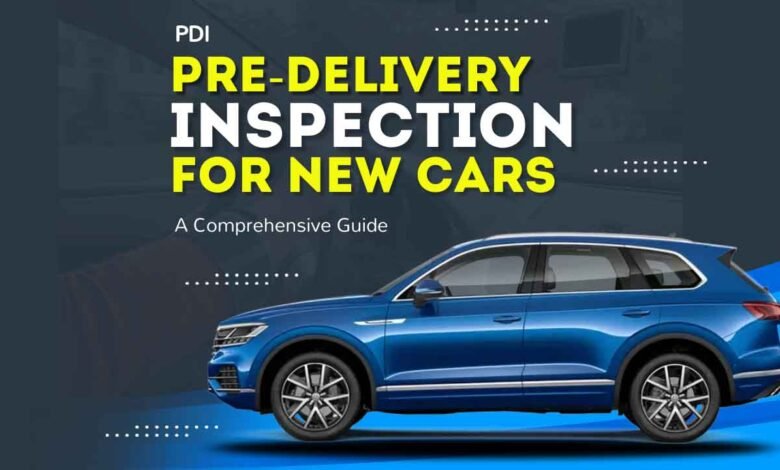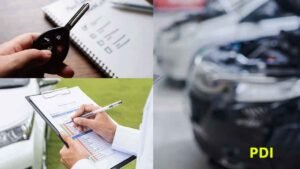Pre-Delivery Inspection (PDI) for New Cars
Buying a new car is an exciting experience, but before you drive off the lot, there's an essential process that ensures your vehicle is in perfect condition—the Pre-Delivery Inspection (PDI).

Buying a new car is an exciting experience, but before you drive off the lot, there’s an essential process that ensures your vehicle is in perfect condition—the Pre-Delivery Inspection (PDI). This detailed inspection is conducted by the dealership to identify and rectify any issues with the car before handing it over to the customer. Understanding the PDI process can help you make sure your new car is in top shape from the moment you take the keys.
What is a Pre-Delivery Inspection (PDI)?
A Pre-Delivery Inspection (PDI) is a thorough check performed by the dealership’s service department after the car arrives from the manufacturer and before it is delivered to the buyer. This process ensures that the vehicle meets all quality standards, is free of defects, and is ready for the road. The PDI covers a wide range of checks, from mechanical and electrical systems to the car’s overall appearance and functionality.
Key Components of the PDI Process
- Exterior Inspection:
- Bodywork: Inspect the car’s body for scratches, dents, or paint defects. Ensure all panels align correctly and the paint finish is consistent.
- Glass: Check all windows and mirrors for cracks, chips, or imperfections. Ensure they are properly installed and function correctly.
- Lights: Test all exterior lights, including headlights, tail lights, indicators, and brake lights, to ensure they are working properly.
- Wheels and Tires: Inspect the tires for proper inflation, tread depth, and any signs of damage. Verify that the wheels are free of scratches or other issues.
- Doors and Locks: Ensure all doors, including the trunk and hood, open and close smoothly. Test the central locking system and remote key fob.
- Interior Inspection:
- Upholstery: Check the seats, carpets, and headliner for stains, tears, or other damage. Ensure that all interior materials meet quality standards.
- Controls and Instruments: Test the functionality of the dashboard controls, including the infotainment system, air conditioning, and other electronic features.
- Seats and Seatbelts: Ensure that all seats are secure, adjustable, and free of defects. Test the seatbelts for proper operation and safety.
- Windows and Mirrors: Check that all windows roll up and down smoothly and that power mirrors adjust correctly.
- Interior Lighting: Test all interior lights, including reading lamps and ambient lighting, to ensure they are functioning.
- Mechanical and Electrical Systems:
- Engine and Transmission: Start the engine to listen for any unusual noises. Check the transmission for smooth operation in all gears.
- Fluids: Inspect fluid levels, including engine oil, coolant, brake fluid, and windshield washer fluid. Top off any low fluids as necessary.
- Brakes and Suspension: Test the brakes for proper stopping power and ensure the suspension is free of abnormal noises or vibrations.
- Battery and Electronics: Check the battery for proper voltage and ensure all electronic systems, including the infotainment system and navigation, are working correctly.
- Exhaust System: Inspect the exhaust for any signs of leaks, damage, or abnormal noise.
- Road Test:
- Engine Performance: During the test drive, evaluate the engine’s performance, including acceleration, idling, and overall responsiveness.
- Handling and Steering: Test the car’s handling, steering responsiveness, and alignment. Ensure the steering wheel is centered and the car drives straight.
- Braking: Test the brakes under various conditions to ensure they stop the car smoothly and effectively without any unusual noise or vibration.
- Noise and Vibration: Listen for any unusual noises or vibrations while driving, which could indicate underlying issues.
- Air Conditioning and Heater: Test both the air conditioning and heater for proper functionality and temperature control.

Final Steps Before Delivery
After the PDI is completed, the dealership will address any identified issues, ensuring that the car is in pristine condition. The final step involves a thorough cleaning and detailing of the car, both inside and out, to ensure it looks its best when handed over to the customer. Additionally, the dealership should provide all necessary documentation, including the owner’s manual, warranty information, and a detailed PDI checklist that confirms all checks have been completed.
Why PDI is Crucial for New Car Buyers
The PDI process is crucial because it ensures that your new car is free from any manufacturing defects or issues that could affect its performance, safety, or appearance. By thoroughly inspecting the car, the dealership helps to prevent potential problems down the line, giving you peace of mind as you drive off the lot. As a buyer, being aware of the PDI process and reviewing the inspection report can also help you address any concerns before finalizing the purchase.
Conclusion
A Pre-Delivery Inspection is a vital step in the new car buying process, ensuring that your vehicle is in perfect condition and ready for the road. By understanding the components of a PDI, you can confidently take possession of your new car, knowing that it has been thoroughly inspected and meets the highest quality standards. Remember, it’s always a good idea to request a copy of the PDI checklist from the dealership and review it carefully before taking delivery of your new vehicle.




